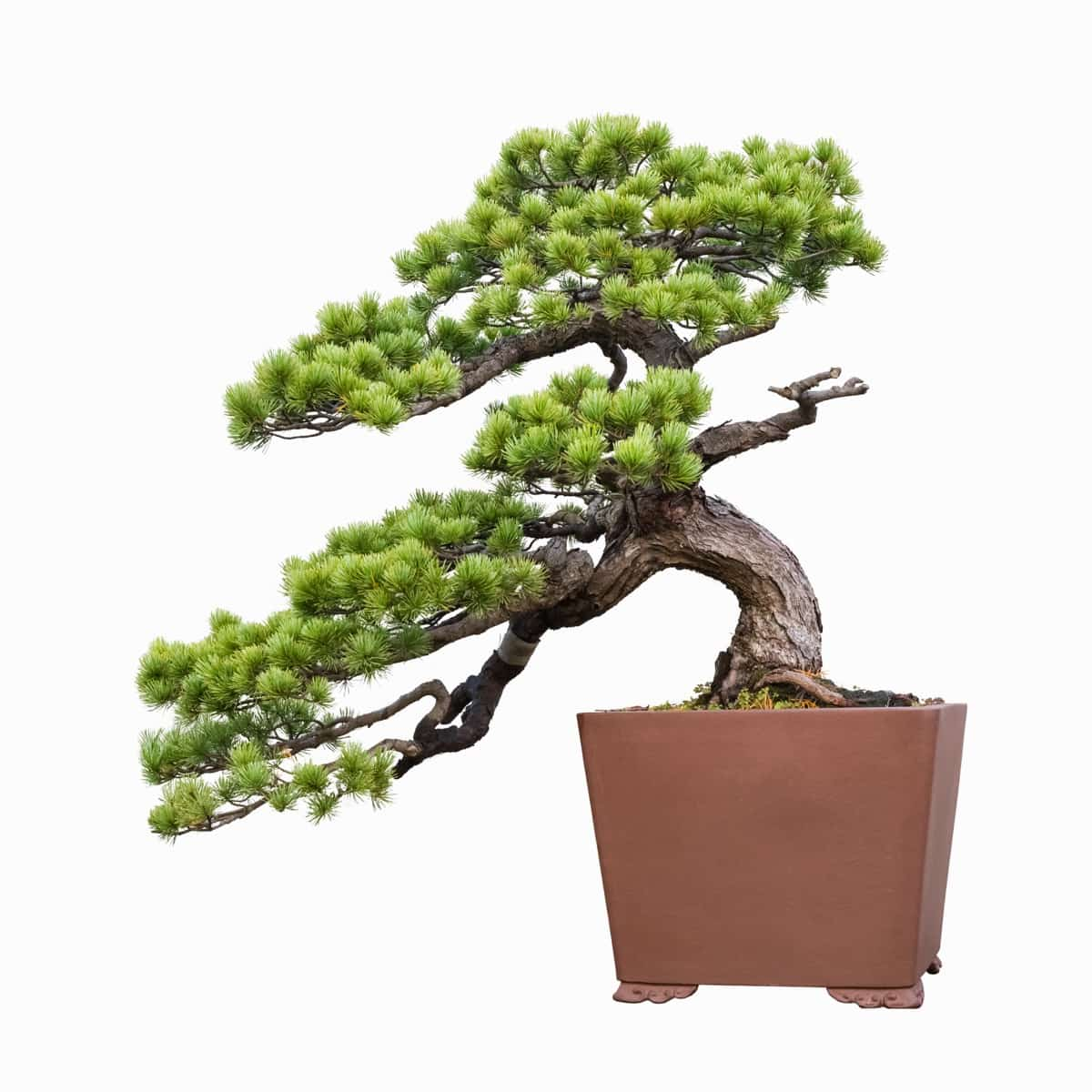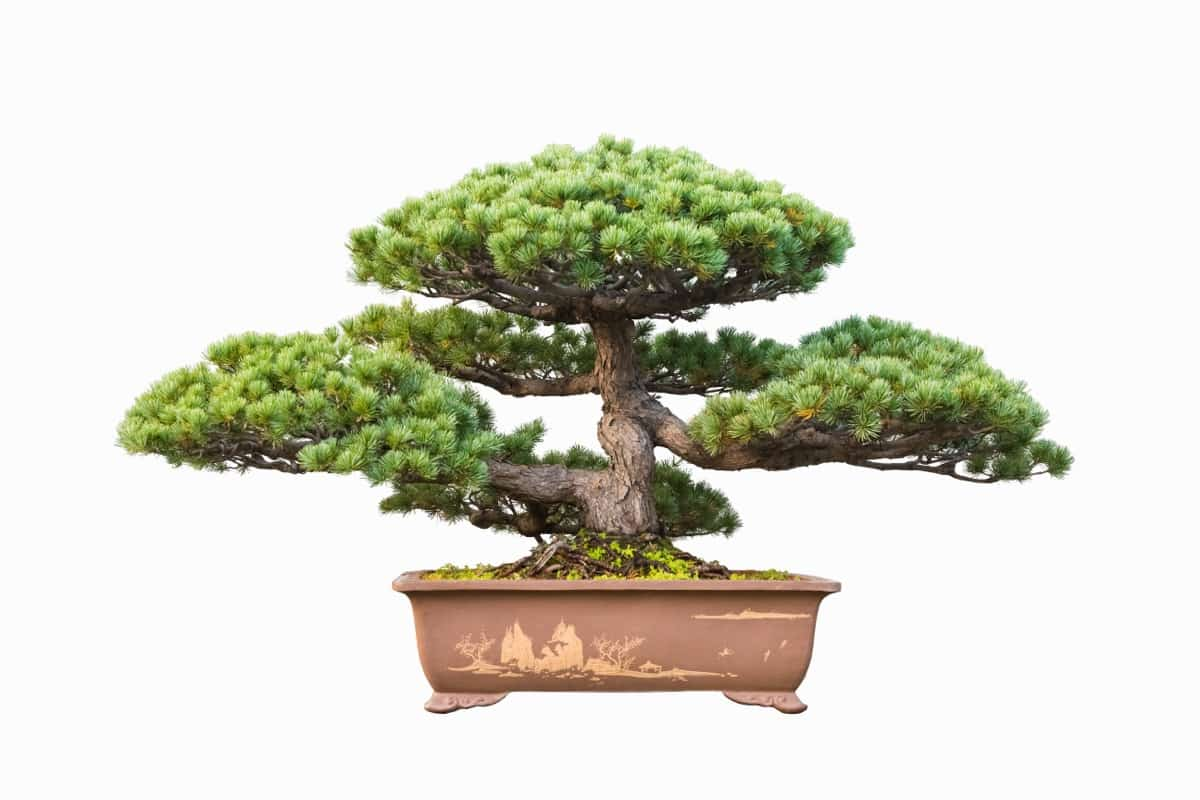Welcome to a comprehensive guide on Petite Pine Bonsai’s cultivation, growth, and care. The captivating charm of these tiny trees, a true reflection of Pine tree bonsai care principles, can leave you in awe. Bonsai pine tree types, especially Petite Pine Bonsai, offer unique aesthetic beauty and distinctive appeal derived from their compact size and the challenge of maintaining them. This guide also touches on nurturing an indoor pine bonsai with step-by-step instructions to help you succeed.

How to Grow and Care for Petite Pine Bonsai
Step-by-step Guide on Planting Petite Pine Bonsai
Starting your Petite Pine Bonsai journey begins with planting. To kickstart, select a suitable bonsai pot with enough depth to accommodate your petite pine’s root system and growth. Before planting, ensure you soak your bonsai seeds in warm water for about 24 hours. This step helps to break seed dormancy, paving the way for successful germination.
Afterward, fill your pot with a high-quality bonsai soil mix, then place your soaked seeds on top. Add a light soil layer over the seeds, then water them completely. A warm, sunny spot is ideal for your new bonsai, as it encourages germination and early growth.
Essential Tips for Growing Petite Pine Bonsai Successfully
To successfully grow a Petite Pine Bonsai, ensure you are familiar with its specific needs and requirements. Like other bonsai pine tree types, Petite Pine Bonsai prefers sunny to partially shaded areas. This variety can tolerate full sun exposure, but adequate watering is essential to prevent drying out. Consistent, proper care of your bonsai, including regular watering, feeding, pruning, and repotting, contributes to the tree’s health and growth. Unlike their outdoor counterparts, indoor pine bonsai varieties might require additional humidity and indirect light.
Proper Care Techniques for Petite Pine Bonsai Trees
Caring for a Petite Pine Bonsai is a practice of patience and dedication. Proper pine tree bonsai care involves a combination of regular watering, correct pruning, timely fertilization, and pest control. One should remember that although bonsai are miniature trees, they aren’t any less significant than full-grown ones. They require the same level of attention, if not more, as they are confined in small pots. The right balance in care techniques ensures a healthy and flourishing bonsai, irrespective of whether it is an indoor pine bonsai or an outdoor variety.
Choosing the Right Soil Mix for Petite Pine Bonsai
Choosing the right soil mix for your Petite Pine Bonsai ensures optimal growth and health. Bonsai soil must be well-draining to prevent water logging yet retain sufficient moisture to support the tree’s needs. A mix of Akadama, Pumice, and Lava Rock is commonly used for bonsai trees, including Petite Pine Bonsai. However, other soil mixes, such as loam, sand, and clay, can also be utilized. Understanding your tree’s specific soil requirements can significantly contribute to its growth and well-being.
Watering Schedule and Techniques for Petite Pine Bonsai
Watering your Petite Pine Bonsai is crucial to pine tree bonsai care. It’s important to keep the soil moderately moist without over-watering, as it can lead to root rot. Watering may need to be more frequent during warmer months or in direct sunlight. Conversely, the watering frequency should be reduced in colder seasons or shaded areas. An early morning watering routine is often recommended for bonsai trees to allow excess water to evaporate throughout the day.
Pruning and Shaping Techniques for Petite Pine Bonsai
Pruning and shaping techniques for Petite Pine Bonsai are key elements of bonsai pine tree care. Pruning helps control the size of the bonsai and promotes the growth of new branches. It removes dead or unwanted branches and leaves, allowing for better air circulation and light penetration. On the other hand, shaping is an artistic aspect of bonsai care. Using wire and careful positioning, you can train your Petite Pine Bonsai to grow in various aesthetic forms, enhancing its appeal and charm.
In case you missed it: How to Grow and Care for Aralia Bonsai: Planting, Pruning, and Repotting

Understanding the Light Requirements of Petite Pine Bonsai
Understanding the light requirements of Petite Pine Bonsai is crucial for its growth. Like other bonsai pine tree types, these miniature trees need adequate sunlight exposure to thrive. They generally prefer direct sunlight for at least a few hours each day, though they can also do well in partially shaded areas. An indoor pine bonsai might require additional light sources, such as grow lights, to supplement natural sunlight, especially in spaces with less natural light availability.
Fertilizing Guidelines for Healthy Growth of Petite Pine Bonsai
Fertilizing your Petite Pine Bonsai is an integral part of its care routine. Regular fertilization replenishes the nutrients in the tree’s soil for growth. A balanced fertilizer typically advises equal amounts of Nitrogen, Phosphorus, and Potassium. However, a higher Nitrogen content can be beneficial during the growing season. Conversely, a fertilizer low in Nitrogen can be used in the dormant period. Following these guidelines can ensure the healthy growth of your Petite Pine Bonsai.
Preventing and Treating Common Pests and Diseases in Petite Pine Bonsai
Prevention and treatment of common pests and diseases in Petite Pine Bonsai is crucial for survival. Common pests like aphids, spider mites, and scale insects can cause significant harm to your bonsai. Regularly inspecting your tree and treating it with a mild, organic insecticide can help keep these pests at bay. Similarly, proper watering and soil practices can prevent diseases like root rot and needle blight. If your bonsai shows signs of disease, it’s important to control the issue promptly.
Winter Care and Protection for Petite Pine Bonsai Trees
Finally, winter care and protection for Petite Pine Bonsai trees is an aspect of pine tree bonsai care that should not be overlooked. Like all bonsai pine tree types, Petite Pines are not immune to the rigors of winter. To protect your bonsai during winter, gradually reduce watering and stop fertilizing as the colder season approaches.
The tree may be moved to a cold greenhouse or protected area if the temperature drops too low. Wrapping the pot and roots with insulating material can also help to protect them from extreme cold. Proper winter care ensures your Petite Pine Bonsai will make it through the season and burst back to life in spring.
In case you missed it: How to Grow and Care for Pachira Bonsai: Planting, Repotting, and Pruning

Conclusion
The journey of growing a Petite Pine Bonsai is a delightful blend of art, science, and patience. Each step is crucial to the tree’s overall health and aesthetic appeal, from selecting the right soil mix and the tree’s watering, light, and fertilization requirements to practicing regular pruning and ensuring its winter protection.
Dealing with potential pests and diseases is an important aspect of pine tree bonsai care. When nurtured with dedication, these miniature trees thrive and become a beautiful representation of nature in a small, controlled environment, whether as an indoor pine bonsai or an outdoor variety. The Petite Pine Bonsai is not just a tree; it’s a lifelong hobby, a living piece of art, and a source of immense satisfaction.
- Feed Your Flock for Less: Top 10 Tips to Save on Chicken Feed
- Ultimate Guide to Ossabaw Island Hog: Breeding, Raising, Diet, and Care
- Hatching Answers: The Top 10 Reasons Your Chickens Aren’t Laying Eggs
- Eggs and Economics: Breaking Down the Cost of Raising Backyard Chickens
- Defend Your Greens: Proven Methods to Keep Iguanas Out of Your Garden
- Ultimate Guide to Cinnamon Queen Chicken: A Comprehensive Guide for Beginners
- Ultimate Guide to California Tan Chicken: Breeding, Raising, Diet, Egg-Production and Care
- Ultimate Guide to Marsh Daisy Chicken: Breeding, Raising, Diet, and Care
- 10 Types of Chicken Farming Businesses You Can Start for Profits